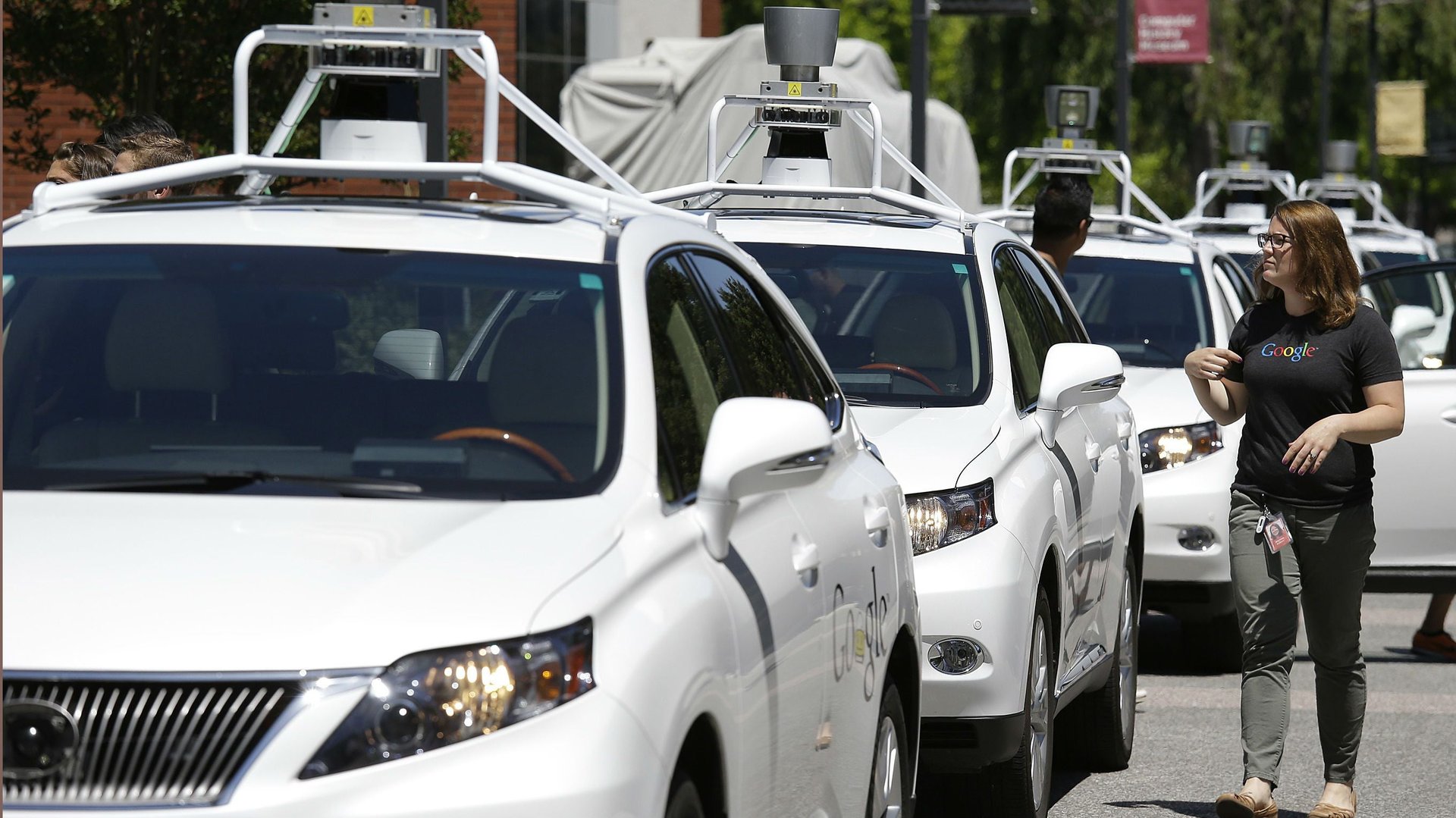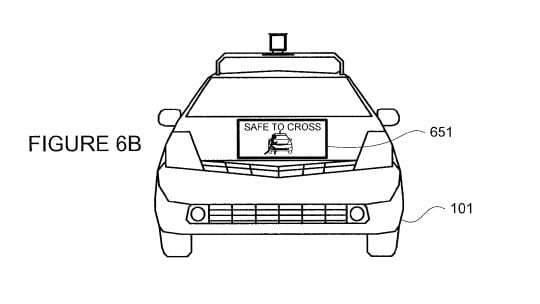Google has patented how its driverless cars will talk to you
When drivers need to communicate with pedestrians, they can just roll down the window to talk (or, more likely, yell). They also have a number of hand signals at their disposal—some nicer than others. But a driverless car can’t do any of that.


When drivers need to communicate with pedestrians, they can just roll down the window to talk (or, more likely, yell). They also have a number of hand signals at their disposal—some nicer than others. But a driverless car can’t do any of that.
Or can it?
On Nov. 24, Google secured a patent for a system that will enable self-driving cars to inform pedestrians of their intentions and signal when it’s safe to cross in front of the vehicle. According to the publicly-available patent application, Google plans to make its cars more communicative with light-up signs, audio cues, mechanical hands, and, eerily, “robotic eyes on the vehicle that allow the pedestrian to recognize that the vehicle ‘sees’ the pedestrian.”
The light-up signs, which appear on the front bumper or the side of the car, would say things like “safe to cross,” or “coming through.” A speaker on the outside of the car could also vocalize the text that appear on the signs, or make other audible alerts.

The robotic hand could mimic human behaviors, like the common “sweeping” motion to let pedestrians know it’s okay to cross. But it’s unclear if the message would come across the same way when it’s a mechanical arm making the gesture, instead of a human being.
Google’s cars—even without these signals—drive very tentatively. Earlier this month, one of the cars was pulled over in California for driving too slowly. The mechanisms outlined in Google’s new patent seem like a good way to make the autonomous cars a little more assertive without becoming aggressive. Nissan, one of several other companies developing driverless cars, unveiled a similar communication system in October.